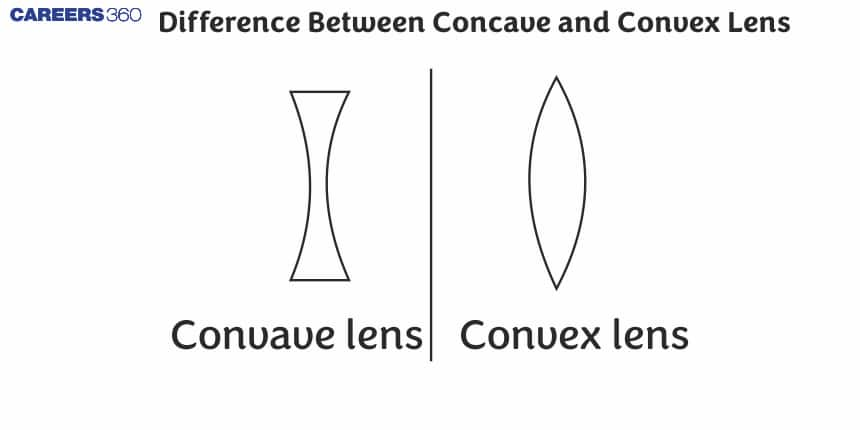Difference Between Concave and Convex Lens
Light is an interesting chapter included in the science syllabus. Students learn many new concepts in this chapter. As they move through the new stages, they dig deeper into the basic and advanced ideas of light. First, they study the characteristics of light rays and then proceed to learn what light rays are. As they progressed further, they learned how light emissions occur in the visible realm. We will learn about the features of a concave and convex lens in this section.
There are usually two types of lenses, namely concave and convex lenses. The shape of the curved area determines the type of lens. A study of lens performance will help the difference between concave and convex lens.
This Story also Contains
- What is a lens ?
- What is Convex Lens?
- Uses of Convex lens
- What is a Concave lens?
- Uses of Concave lens
- Difference between convex and concave lens

Also read -
What is a lens ?
A lens is a transparent material medium bounded by two surfaces, of which one or both surfaces are spherical.
The function of a lens is to deviate light, it can either converge or diverge a parallel beam of light. Depending upon this property, lenses may be characterised into two categories:
- Converging lens (Convex lens).
- Diverging lens(Concave lens).
What is Convex Lens?
A convex lens is a transparent lens that is thicker in the middle and thinner at the edges.
It bends light rays inward and makes them converge at a point called the focus.
Uses of Convex lens
- Used in magnifying glasses to see small objects clearly.
- In cameras to focus light and form clear images.
- In microscopes and telescopes to observe tiny or distant objects.
- In projectors to enlarge images on screens.
- In eyeglasses to correct farsightedness (hyperopia).
|
Related Topics, |
What is a Concave lens?
A concave lens is a transparent lens that is thinner in the middle and thicker at the edges.
It bends light rays outward, making them diverge instead of meet.
Uses of Concave lens
- Used as a spy hole in doors.
- Used in spectacles to correct myopia.
- Used in cameras for clear pictures.
- Used in flashlights to spread light beam.
NCERT Physics Notes :
Difference between convex and concave lens
|
Properties |
Concave lens |
Convex lens |
|
Look |
The middle of a concave lens is thinner, while the edges are thicker. |
The middle of a convex lens is thicker than the edges, while the margins are thinner. |
|
Also known as |
Diverging lenses |
Converging lenses |
|
Focal length |
Negative |
Positive |
|
Incident rays |
The incident rays are diverged away from the main axis. |
The incident rays are converged towards the primary axis. |
|
Applications |
Used in glasses, some telescopes, and door spy holes, among other things. It's also utilized to remedy a problem with short-sightedness. |
Used in cameras, overhead projectors, projector microscopes, basic telescopes, magnifying glasses, and other devices. It can also be used to correct a long-sightedness condition. |
Also, check-
Frequently Asked Questions (FAQs)
The type of opposite facial curve determines the difference between concave and convex lens. It also identifies the type of recurrence in making it.
If you follow the summary section of this page, you will find the use of this lens described in the simplest version. You can easily memorize lens applications.
Basically, the bright spot of the convex mirror shapes on the outside while the concave mirror goes inside. The main difference is the image we create in these two mirrors. In other words, thin images from convex mirrors while enlarged images from concave mirrors.
The difference between the concave and convex lens lies in the months of their given angles. For a polygon to be exposed, all of its internal angles must be less than 180 degrees. Otherwise, the polygon is concave.
A rhombus with interlocking sides can have sides measuring about four inches in length. A square is a parallelogram with four interlocking angles (right angles) and four interlocking angles, and has all the properties of a parallelogram, rectangle and rhombus. Parallelograms are convex quadrilaterals
As concave, convex can be used as a local name or a line that turns outwards, and has the use of geometry, in which it describes a polygon with internal arms less than or equal to 180 °.